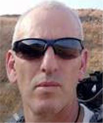Integrated and adaptive monitoring of geological carbon storage operations with surface distributed acoustic sensing
Mike Branston A * , David F. Halliday B , Ran Bachrach C , Mathieu Chapelle B , Sarah Harrington B , Rob Campbell B and James Butt BA
B
C

Mike Branston is a Principal Geophysicist at SLB. He is the New Energy Domain Lead for Exploration Data. |

David F. Halliday is a Principal Research Geophysicist, working in the Geophysics Technology organisation at SLB. |

Ran Bachrach is the Scientific Advisor for Geosolutions in SLB. |

Mathieu Chapelle is a Senior Geophysicist within the Solution Design and Modelling team in SLB. |

Sarah Harrington is a Senior Rock Physicist and lead of the Seismic Reservoir Characterisation team in SLB Europe. |

Rob Campbell is a Senior Geophysicist in the Solution Design and Modelling team in SLB. |

James Butt is Senior Geophysicist at SLB, overseeing Solution Design and Modelling and Seismic Reservoir Characterisation. |
Abstract
The monitoring objective for carbon storage (CS) can be described as containment (i.e. confirming the absence of unwanted outcomes to the environment) and conformance (i.e. validating that the migration of the CO2 conforms to our modelled predictions). Conventional approaches to CS monitoring have been challenged in terms of cost, the impact on the environment, and the impact that the required scale of operation for CS has on both. We have developed an adaptive monitoring concept that leverages distributed acoustic sensing (DAS) using fibre-optic cables deployed horizontally at the surface (S-DAS). The strategy takes advantage of the sensor sampling and frequency response to adaptively track and report on the injection operation and plume’s evolution using a much-reduced seismic source effort. Experiments conducted within a digital twin of a Southern North Sea saline aquifer show the system is able to report on three critical monitoring objectives: fluid front movement, pressure envelope development, and induced seismicity. We also note the opportunity that interferometry and the use of passive, ambient noise has in further cost optimisation when coupled with the broadband response of the S-DAS system. The digital integration of the S-DAS system further facilitates rapid validation and update of the subsurface model. The system reduces overall expenditure during monitoring, whilst maintaining project assurance. It provides a predictable operation cost throughout the project life as the acquisition effort and timing can be adapted to meet multiple monitoring objectives within a single system.
Keywords: 4D, CCS, DAS, feasibility study, MMV, monitoring geological storage, plume detection, SDAS, S-DAS, time-lapse.
 Mike Branston is a Principal Geophysicist at SLB. He is the New Energy Domain Lead for Exploration Data. |
 David F. Halliday is a Principal Research Geophysicist, working in the Geophysics Technology organisation at SLB. |
 Ran Bachrach is the Scientific Advisor for Geosolutions in SLB. |
 Mathieu Chapelle is a Senior Geophysicist within the Solution Design and Modelling team in SLB. |
 Sarah Harrington is a Senior Rock Physicist and lead of the Seismic Reservoir Characterisation team in SLB Europe. |
 Rob Campbell is a Senior Geophysicist in the Solution Design and Modelling team in SLB. |
 James Butt is Senior Geophysicist at SLB, overseeing Solution Design and Modelling and Seismic Reservoir Characterisation. |


